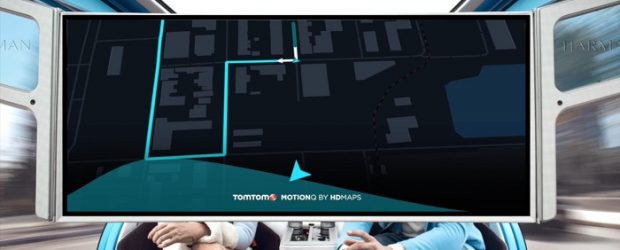TomTom further embedded itself in the world of autonomous driving Monday by announcing a series of new partnerships and software launches at CES.
The navigation tech company from Amsterdam announced Baidu and Zenuity are its first partners to use its AutoStream platform, allowing vehicles to tap into the TomTom cloud and stream the road ahead.
Willem Strijbosch, TomTom’s head of autonomous driving, called the platform a “game changer” for companies that are working on the future of driving. AutoStream allows customers to customize the map data stream based on horizon length and sensor configurations. It can also stream map data including Advanced Driver Assistance System (ADAS) attributes such as gradient and curvature.
AutoStream will be pre-integrated into Apollo, Baidu’s open autonomous driving platform.
Weihao Gu, Baidu’s GM of intelligent vehicle division, said in a statement that map data is key to the development of self-driving vehicles. TomTom’s map content will be delivered to Zenuity’s own autonomous driving software, Connected Roadview, through AutoStream. AutoStream will be available for production usage in 2018.
TomTom and Qualcomm Technologies, Inc., a subsidiary of Qualcomm Inc., are combining TomTom HD Map, a cloud-based high-definition map, with Qualcomm’s Drive Data software that analyzes data from a vehicle’s sensors and allows it to learn driving patterns and react to its surroundings.
TomTom’s HD Map currently maps more than 380,000 km of highways and interstates and covers the USA, Western Europe and Japan.
TomTom’s NavKit software also topped the TIOBE Software Quality Award in the large, mid and small-sized projects categories, the company announced. It scored more than 90 per cent on the TIOBE Quality Indicator charts.
Tackling motion sickness
The unveiling of the Rinspeed Snap’s robotaxi concept vehicle simultaneously shed light on MotionQ, TomTom’s new interface concept that looks to address the issue of motion sickness among passengers in autonomous vehicles.

MotionQ presents passengers with a central display that communicates the vehicle’s intended motion, including turns and accelerations, as well as road borders, road geometry and lane markings.
TomTom’s MotionQ whitepaper says Rinspeed Snap was the perfect vehicle to experiment and test its concepts to tackle motion sickness due to its configurable shared “living room” on wheels design.
